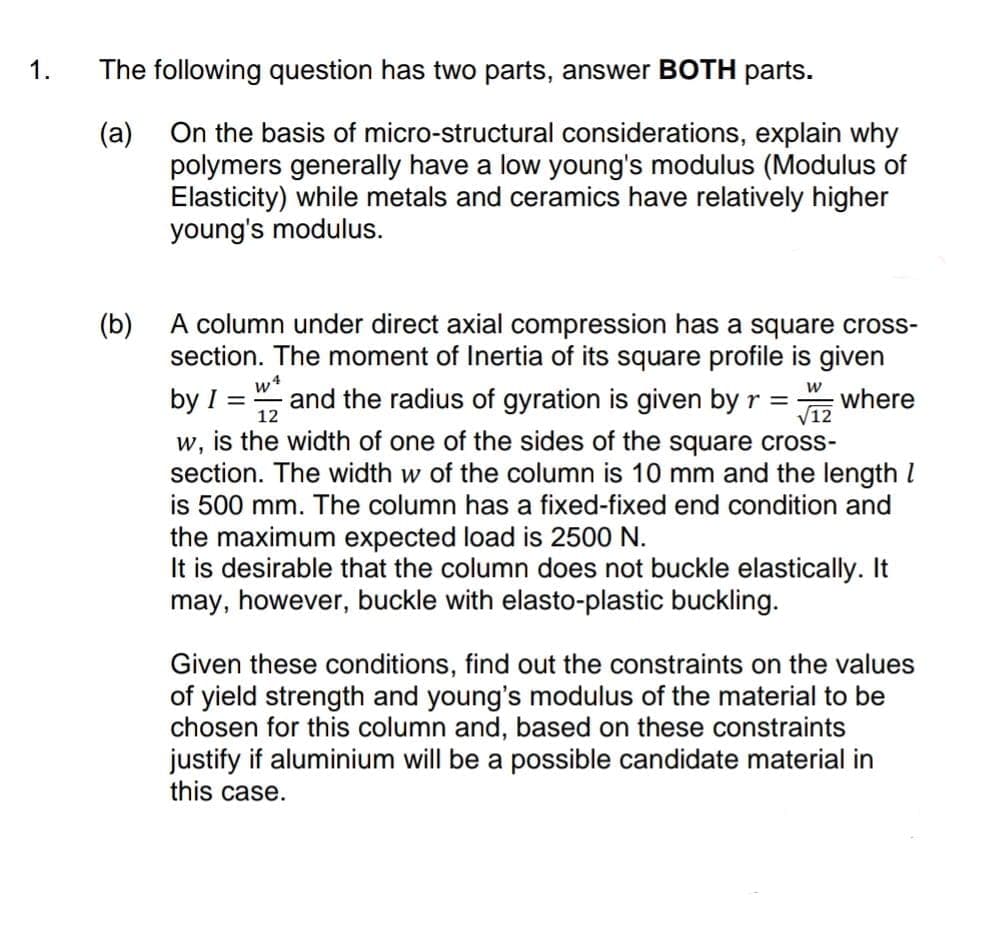(a) On the basis of micro-structural considerations, explain why polymers generally have a low young's modulus (Modulus of Elasticity) while metals and ceramics have relatively higher young's modulus.
(a) On the basis of micro-structural considerations, explain why polymers generally have a low young's modulus (Modulus of Elasticity) while metals and ceramics have relatively higher young's modulus.
Chapter28: Atomic Spectroscopy
Section: Chapter Questions
Problem 28.4QAP
Related questions
Question
please send handwritten solution for Q1 part a

Transcribed Image Text:1.
The following question has two parts, answer BOTH parts.
(a)
On the basis of micro-structural considerations, explain why
polymers generally have a low young's modulus (Modulus of
Elasticity) while metals and ceramics have relatively higher
young's modulus.
(b)
A column under direct axial compression has a square cross-
section. The moment of Inertia of its square profile is given
w4
by I =
and the radius of gyration is given by r =
12
where
V12
w, is the width of one of the sides of the square cross-
section. The width w of the column is 10 mm and the length I
is 500 mm. The column has a fixed-fixed end condition and
the maximum expected load is 2500 N.
It is desirable that the column does not buckle elastically. It
may, however, buckle with elasto-plastic buckling.
Given these conditions, find out the constraints on the values
of yield strength and young's modulus of the material to be
chosen for this column and, based on these constraints
justify if aluminium will be a possible candidate material in
this case.
Expert Solution
This question has been solved!
Explore an expertly crafted, step-by-step solution for a thorough understanding of key concepts.
Step by step
Solved in 2 steps with 1 images

Knowledge Booster
Learn more about
Need a deep-dive on the concept behind this application? Look no further. Learn more about this topic, chemistry and related others by exploring similar questions and additional content below.Recommended textbooks for you

